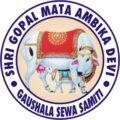Date: 6 December 2024
मार्गशीर्ष मास के शुक्ल पक्ष की पंचमी तिथि को स्वामी हरिदासजी की सघन-उपासना के फलस्वरूप वृंदावन के निधिवन में श्री बांकेबिहारी जी का प्राकट्य हुआ। बिहारी जी के इस प्राकट्य उत्सव को ‘विहार पंचमी’ के रूप में बड़े ही उल्लास के साथ मनाया जाता है। इस अवसर पर मंदिर को भव्य रूप से सजाया जाता है और विशेष पूजा अर्चना की जाती है। देश-विदेश से आए श्रद्धालु इस पावन पर्व का हिस्सा बनते हैं। वृंदावन, भगवान श्रीकृष्ण और राधारानी की लीलाओं से जुड़ी पावन भूमि है।
बांके बिहारीजी की मूर्ति का प्राकट्य अत्यंत चमत्कारिक और दिव्य घटना है, जो भक्तों के हृदय में भक्ति और श्रद्धा का संचार करती है। मनोहर श्यामवर्ण छवि वाले श्रीविग्रह, श्रीकृष्ण और राधारानी के सयुंक्त स्वरुप का प्रतीक है। बांकेबिहारी नाम का विशेष अर्थ है ‘बांके’ यानी तीनों स्थानों से झुके हुए और ‘बिहारी’ नाम का अर्थ है ‘वृंदावन में बिहार करने वाले’। श्रीकृष्ण की यह मुद्रा भक्तों के लिए उनके प्रेम और लीलाओं की प्रतीक है। वृंदावन में स्थित बांके बिहारी जी का मंदिर, श्रीकृष्ण भक्तों के लिए विशेष आस्था का केंद्र है।
संत हरिदास जी का योगदान
बांके बिहारी जी की मूर्ति के प्राकट्य का सीधा संबंध संत हरिदास जी से है, जो श्रीकृष्ण और राधारानी के अनन्य भक्त थे और वृंदावन के निधिवन में साधना करते थे। वही निधिवन जहां के बारे में आज भी मान्यता है कि यहां हर रात राधा-कृष्ण गोपियों संग रासलीला करते हैं। स्वामी हरिदास जी सखी-संप्रदाय के प्रवर्तक थे। संत हरिदास जी वृंदावन में नित्य राधा-कृष्ण की लीलाओं का गान करते थे। उनका मुख्य उद्देश्य भक्ति के माध्यम से भगवान को प्रसन्न करना था। वे अपने भक्तिभाव में इतने लीन हो जाते थे कि उन्हें सांसारिक सुख-दुख का कोई ध्यान नहीं रहता था। मान्यता के अनुसार स्वामी हरिदास जी को राधाजी की एक सखी का ही स्वरूप माना गया है, जिनका नाम ललिता था।
निधिवन में प्रकट हुए बांके बिहारी जी
संत हरिदास जी निधिवन में अपनी बांसुरी और स्वर माधुर्य से राधा-कृष्ण की लीलाओं का गान करते थे। कहा जाता है कि एक दिन जब वे भक्ति और प्रेम में डूबकर भजन गा रहे थे, तो राधा-कृष्ण उनकी भक्ति से प्रसन्न होकर स्वयं उनके सामने प्रकट हुए। संत हरिदास जी ने जब भगवान का यह दिव्य रूप देखा, तो उनसे प्रार्थना की कि वे एक रूप में प्रकट होकर हमेशा भक्तों के बीच रहें। उनकी प्रार्थना पर भगवान राधा-कृष्ण ने एक दिव्य मूर्ति का रूप धारण किया। यह मूर्ति बांके बिहारी जी के नाम से प्रसिद्ध हुई।
मूर्ति की विशेषता यह है कि इसके दर्शन मात्र से भक्तों को राधा-कृष्ण के दिव्य प्रेम का अनुभव होता है। संत हरिदास जी ने बांके बिहारी जी की इस दिव्य मूर्ति को निधिवन में स्थापित किया। प्रारंभ में इस मूर्ति की पूजा निधिवन के भीतर होती थी। समय के साथ भक्तों की बढ़ती संख्या को देखते हुए बांके बिहारी जी का मंदिर बनाया गया। यह मंदिर आज वृंदावन के प्रमुख तीर्थ स्थलों में से एक है।

